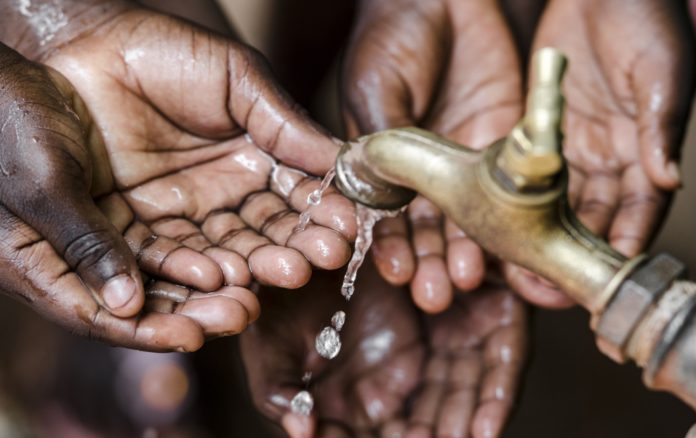New Delhi (NVI): Almost one in five children around the world living in areas with high water vulnerability does not have enough water to meet their everyday needs, according to a UNICEF report.
The UN Children’s Fund report showed that, “Globally, more than 1.42 billion people, including 450 million children, live in areas of high, or extremely high, water vulnerability.”
This report is part of the Water Security for All initiative, which identifies areas where physical water scarcity risks overlap with poor water service levels. UNICEF said that communities living in these areas depend on surface water, unimproved sources or water which can take more than 30 minutes to collect.
“The world’s water crisis is not simply coming, it is here, and climate change will only make it worse,” said UNICEF Executive Director Henrietta Fore.
“Children are the biggest victims. When wells dry-up, children are the ones missing school to fetch water. When floods hit, children fall ill from waterborne illnesses. And when water resources decline, children cannot wash their hands to fight off diseases,” she said.
The report also shows that children in more than 80 countries live in areas with high or extremely high water vulnerability.
“Eastern and Southern Africa has the highest proportion of children living in such areas, with more than half of children (58 per cent) facing difficulty accessing sufficient water every day,” it stated.
It is followed by West and Central Africa (31 per cent), South Asia (25 per cent), and the Middle East (23 per cent). South Asia is home to the largest number of children living in areas of high water vulnerability – more than 155 million children, as per the report.
Whereas, children in 37 ‘hotspot’ countries face especially dire circumstances in terms of absolute numbers, the proportions of children affected, and where global resources, support and urgent action must be mobilized.
This includes Afghanistan, Burkina Faso, Ethiopia, Haiti, Kenya, Niger, Nigeria, Pakistan, Papua New Guinea, Sudan, Tanzania and Yemen.
UNICEF report informed that demand for water continues to increase dramatically while resources are dwindling. In addition to rapid population growth, urbanization, water misuse and extreme weather events reduce available quantities of safe water, exacerbating water stress.
According to a UNICEF report from 2017, almost one in four children globally will live in areas of extremely high water stress by 2040.
The UN agency also stated that while the impact of water scarcity can be felt by all, no one suffers more than the most vulnerable children, adding that, “Children and families living in vulnerable communities face the double-edged sword of coping with high water scarcity levels while having the lowest water services.”
In response, UNICEF is launching the Water Security for All initiative to ensure every child has access to sustainable and climate-resilient water services.
It aims to mobilize resources, partnerships, innovation and global response to identified hotspots where the need for safe, resilient and sustainable water, sanitation and hygiene services is the greatest and most urgent.
“We can only achieve water security for every child through innovation, investment and collaboration, and by ensuring services are sustainable and resilient to climate shocks. For our children and our planet, we have to act,” Fore added.
-RJV








